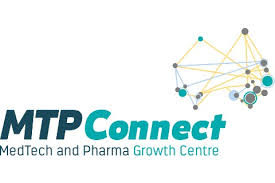
Posted: 12 October 2023
In 2019 there were approximately 150,000 patients diagnosed with epilepsy resulting in $12.3 billion of direct and indirect costs1,2. It is now estimated that up to 200,000 Australians face the daily prospect of debilitating epileptic seizures that interrupt normal brain function and can lead to loss of bodily control, consciousness, and even life. The constant uncertainty surrounding when these events will occur limits people’s ability to participate in everyday experiences like working, exercising, and driving.
Discoveries made during clinical trials conducted in Melbourne from 2010 to 2012 by Professor Mark Cook3, indicated the existence of strong patient-specific cycles in neural activity that modulate seizure risk.
Diagnostics company Seer Medical, which specialises in the diagnosis and management of epilepsy, has hypothesised that these cycles are driven by naturally occurring physiological changes, which could be detected using wearables.
Helping to reduce mortality and associated economic costs
The ability to track and forecast cycles of seizure risk via non-invasive wearable devices could radically transform the management of epilepsy, empowering individuals to make informed decisions about their health. It stands to reduce the burden of lifelong medication, by allowing administration of fast-acting anti-seizure medication only when required. Meanwhile, the objective and actionable data these devices gather could improve mortality and the economic costs associated with unpredictable seizures.
Working towards these objectives with collaborators at The University of Melbourne, Melbourne-based Seer Medical set out to develop a real-time seizure forecasting system leveraging the inbuilt sensors of smart watches such as the Fitbit, a strategic partner in this project. Bolstered by BioMedTech Horizons (BMTH) funding, the team set out to determine the system’s validity.
Seizure diaries have been a recommended practice by many organisations globally but for some people they can be unreliable. So, the team wanted to validate its predictive forecasts using Seer Medical’s own gold-standard video EEG (brain wave) recordings via the Seer Sense product and understand which signals from the wearable would successfully forecast seizures for most people.
Establishing secure data transfer from a consumer grade wearable product to the Seer Medical’s patient data secure (HIPPA compliant) servers, database and analysis tools was a significant undertaking and laid the foundation for the clinical study to be coordinated with the University of Melbourne. The seizure forecasting app moved from a simple proof-of concept design to a fully functioning mobile app validated through extensive testing.
First-in-class device for epilepsy using non-invasive digital health tools
With all the parts in place, the clinical study team demonstrated for the first time that seizure forecasting is possible with non-invasive digital health tools. This is a first-in-class device for epilepsy and has potential applications to grow into other episodic disorders, such as syncope or functional neurological disorders.
During the project, Seer Medical launched the world’s first risk forecasting mobile app, at no cost to users. Listed as a Class 1 medical device on the Australian Register of Therapeutic Goods, the Seer app requires people to log seizure events through the app diary, including details to help identify their triggers.
Over time with additional input from the Fitbit wearable, the app delivers insights about their seizure cycles, so they can see when they are more or less likely to experience seizure activity and can plan accordingly.
Seer Medical’s General Manager in Australia Marguerite Wintle added that when using seizure forecasts to book Seer Sense diagnosis more optimally, prior use of the app was found to improve the yield of seizures by 63 per cent in adults and 93 per cent in children. This has the potential to greatly reduce both the direct and indirect costs of undertaking EEG monitoring, by improving the yield of these studies.
“We hope to one day utilise each patient’s individual risk forecast when scheduling home-based video EEG-ECG studies to increase the likelihood of capturing the events under investigation. This is particularly useful in patients who have infrequent seizures, who would otherwise potentially require repeat monitoring.”
Demonstrating scientific leadership and strengthening global collaborations
Over the life of the BMTH project, Seer Medical strengthened collaborations with academics at the Mayo Clinic, King’s College London, the Epilepsy Foundation of America, and many tertiary epilepsy centres in Melbourne, broadened its field of play through expansion to the US, the UK and Germany; grew its workforce significantly; and demonstrated scientific leadership and ability to translate research ideas into patient and clinician-facing products and services.
Seer Medical’s seizure forecasting system offers numerous benefits to people with epilepsy. The uncertainty around future seizure events is widely considered one of the most disabling aspects of epilepsy, and the potential to manage medication dose in line with seizure forecasts could save both direct pharmaceutical cost and minimise side effects. The Seer app product launched with support of the BMTH program represents a great step towards alleviating this disability.
About two-thirds of the 50 million diagnosed people with epilepsy achieve seizure freedom on medications once properly diagnosed. That leaves one-third of people with epilepsy that could potentially benefit from ongoing use of seizure management tools, including the Seer app, and seizure risk forecasting.
According to Seer Medical’s CEO and Co-Founder Dr Dean Freestone, the BMTH project has enabled the company to significantly advance the suite of tools available to patients for capturing data related to their epilepsy and alleviating the burden of ongoing seizures.
“The BioMedTech Horizons funding has been transformational for Seer,” he said. “Being able to translate our seizure forecasting IP into a patient-facing feature has cemented Seer as global scientific leaders in epilepsy. This leadership greatly improves our relationships with external stakeholders such as foundations, leading hospitals, and key opinion leaders.
“Most importantly, seizure risk forecasting is already improving the lives of people with epilepsy and reducing the social and economic costs of the disease,” said Dr Freestone.



